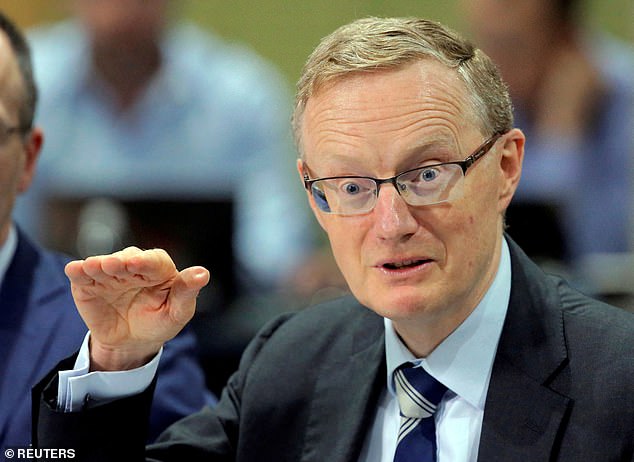
Australia’s most powerful banker is urging borrowers to prepare for more interest rates rises with inflation expected to remain high for several more years.
Reserve Bank of Australia governor Philip Lowe said it would be at least two years before the inflation fell back within its two to three per cent target.
This would mean several more interest rate rises in 2022 before inflation peaked later this year at the highest level in 32 years, eroding the savings of borrowers.
‘As interest rates start to rise, those buffers will be eaten into and the fact that households have more debt than they used to, it will start to bite,’ Dr Lowe told the American Chamber of Commerce in Australia on Tuesday.
‘We’re very conscious of that.’




Reserve Bank of Australia governor Philip Lowe said it would be at least two years before the inflation fell back within its two to three per cent target
Dr Lowe last week predicted inflation would hit seven per cent by the end of 2022 for the first time since late 1990.
Headline inflation in the year to March surged by 5.1 per cent – the fastest pace since 2001.
The Reserve Bank in May raised the cash rate by 0.25 percentage points, marking the first increase since November 2010.
This ended the era of the record-low 0.1 per cent cash rate, taking it to 0.35 per cent.
Another rate rise followed in June, with the 0.5 percentage point increase the steepest since February 2000.
The existing cash rate of 0.85 per cent is now the highest since October 2019 before the pandemic.
The RBA minutes of that June meeting, released on Tuesday, noted the board was concerned about wage pressures with unemployment in May remaining at a 48-year low of 3.9 per cent.
‘Labour market conditions were the tightest they had been in many years and wage pressures were emerging,’ it said.
The Commonwealth Bank, Australia’s biggest home lender, is expecting another half a percentage point rate rise in July.
This would be followed by 0.25 percentage point increases in August, September and November, taking the cash rate to 2.1 per cent – the highest May 2015.
Nonetheless, Dr Lowe was confident Australia would avoid a recession, even though New Zealand suffered a 0.2 per cent contraction in the March quarter.